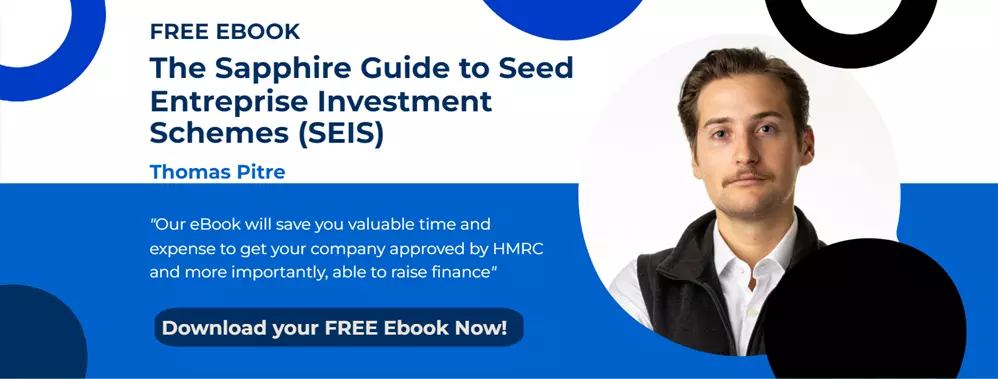 The Seed Enterprise Investment and the Enterprise Investment Schemes have become well established cornerstones of the UK government's efforts to support the flow of capital to small to medium enterprises ("SMEs") and is supported by both tories and liberals. The scheme has proven a huge success, and as per the Chancellor's Statement earlier this month, over 2,000 companies had raised over £175 million of SEIS investment from the time the scheme launched in 2012 up to July 2014. Both schemes have become important contributors to the economy in areas where the banks have been unable to assist.
The Seed Enterprise Investment and the Enterprise Investment Schemes have become well established cornerstones of the UK government's efforts to support the flow of capital to small to medium enterprises ("SMEs") and is supported by both tories and liberals. The scheme has proven a huge success, and as per the Chancellor's Statement earlier this month, over 2,000 companies had raised over £175 million of SEIS investment from the time the scheme launched in 2012 up to July 2014. Both schemes have become important contributors to the economy in areas where the banks have been unable to assist.
As such, it is no wonder that the recent Chancellor's Autumn Statement made only minor amendments to SEIS and EIS, the main change being the introduction of a new digital process for companies and investors to use these schemes. This process is expected to make it easier to avail of the schemes for all parties involved and is to be rolled out in 2016. Not much further information was disclosed about this change at this time. Other changes to the schemes announced in this year's Autumn Statement are as follows:
- Gains eligible for Entrepreneurs Relief which are deferred and invested into companies qualifying for EIS will retain the lower capital gains tax rate (ie. 10%) when the gain is realised. This change is to be effective immediately.
- Effective 6 April 2015, companies benefiting substantially from energy generation subsidies will no longer qualify for Seed Enterprise Investment Scheme, Enterprise Investment Scheme or Venture Capital Trust ("VCT") tax reliefs. The only exception in this is in the case of community organisations. This change is done to properly target HMRC support to enterprises that require it most.
Other notable amendments to the enterprise investment area include:
- The Social Investment Tax Relief was expanded to allow companies to benefit from up to £5 million of tax advantaged investment annually in that scheme and up to £15 million of investment in total. As we haven't really touched upon the Social Investment Tax Relief in our blogs to date, for those that aren't aware of them, they provide a range of income and capital gains tax reliefs which can be claimed by individual investors for investments made in social enterprises, with a view to helping people and communities (this is an area we will be covering further in subsequent blogs so be sure to watch this space).
- A new Social Venture Capital trust will also be introduced which is to be operated in a similar manner to existing Venture Capital Trusts.
- Strict regulations are also going to be introduced to ensure that VCT merger monies are not treated as new shares. These regulations are to come into effect in February 2015.
- With regards to Collective Investment Schemes ("CIS"), fund managers will no longer be able to disguise guaranteed fee income as capital gains in order to avoid income tax.
- One of the changes made to further promote innovation in the country is the increase of R&D Tax Credits for SMEs from 225% to 230%. It is also important to note that the government is working towards establishing an advance assurance scheme for SMEs making their first tax claim. This will reduce unnecessary accountancy fees and facilitate the process for companies to take advantage of the credit.
- Small Business Rates Relief is also being doubled and is expected to benefit over half a million small businesses.
Yet again for another year the UK government shows its commitment and trust in the Seed Enterprise Investment Scheme and the Enterprise Investment Scheme as a way to promote investment, increase the number of jobs in the country, and mitigate investment risk. We also agree that there is no better way to assist the flow of resources to start up and early stage companies.
Written by Vasiliki Carson
As a partner at Sapphire Capital Partners LLP, Vasiliki specialises in advising clients in regard to Patent Box as well as SEIS and EIS schemes, writing business plans and financial models for clients. Prior to co-founding Sapphire Capital, Vasiliki was with PwC and Goldman Sachs in Tokyo and New York. Contact her by email at vasiliki@sapphirecapitalpartners.co.uk or view Vasiliki's full profile here.
.gif)




